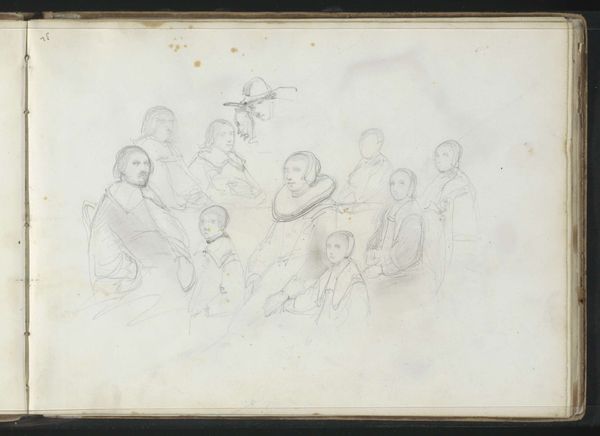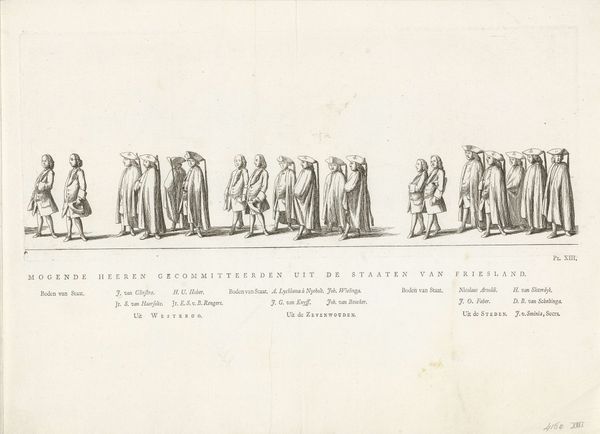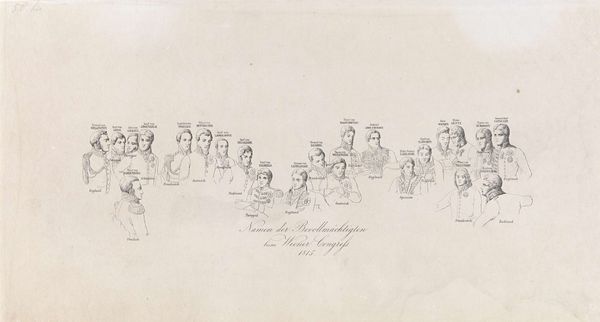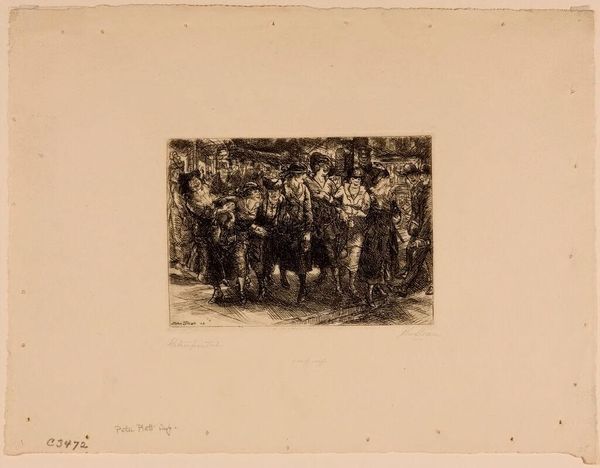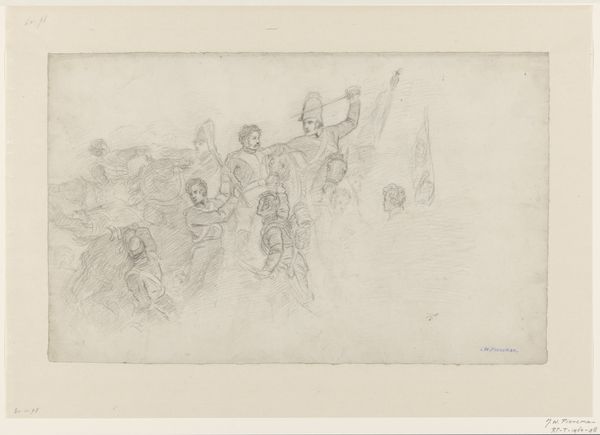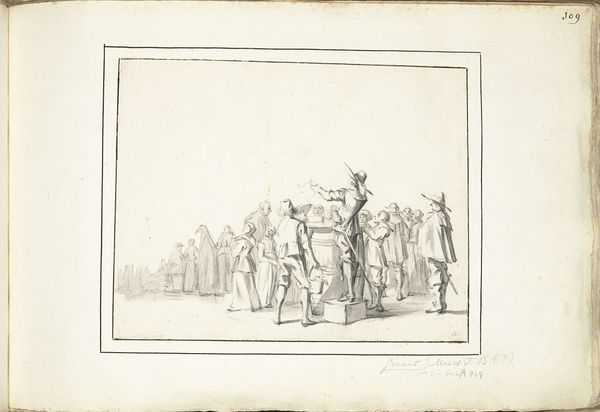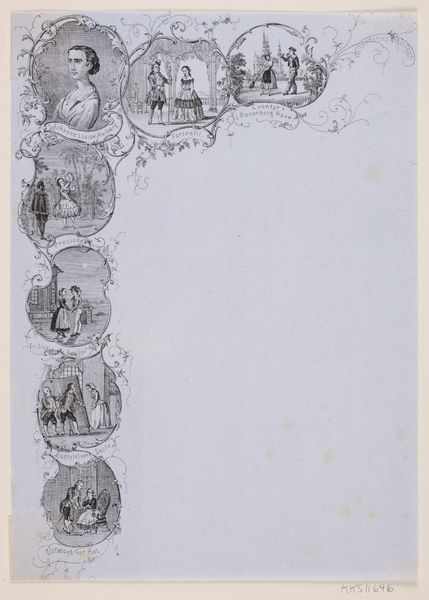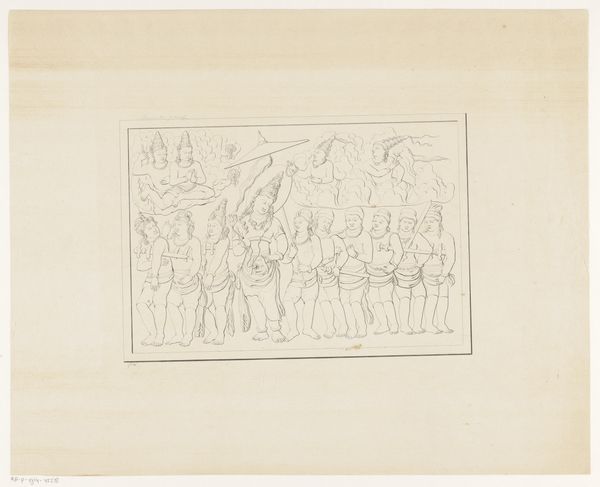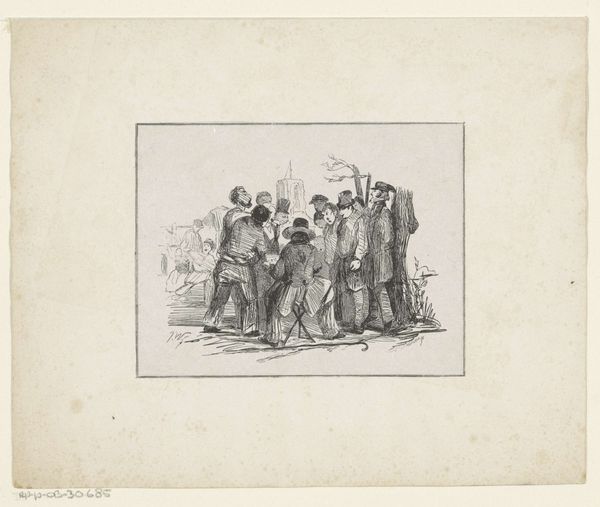
Sleutel bij de prent van het leggen van de eersten steen door de koning aan de spoorwegbrug te Zutphen, 1861 1861
0:00
0:00
drawing, print, pencil
#
portrait
#
drawing
# print
#
pencil sketch
#
pen-ink sketch
#
pencil
#
genre-painting
#
academic-art
#
realism
Dimensions: height 363 mm, width 547 mm
Copyright: Rijks Museum: Open Domain
Editor: So, here we have an anonymous print from 1861, titled "Sleutel bij de prent van het leggen van de eersten steen door de koning aan de spoorwegbrug te Zutphen." It depicts a group of figures, almost like a class photo, rendered in pencil and ink. What strikes me is its formality—it's trying to capture a specific historical moment. What do you see in this piece? Curator: It's interesting how this work operates on multiple levels. On the surface, it's a commemorative image of a Dutch king laying the foundation stone for a railway bridge, but it also subtly highlights the intersection of power, progress, and national identity. The act of depicting the laying of the cornerstone serves to monumentalize not just the event, but the advancement of infrastructure under the monarch. But who is truly benefitting from this progress, and who might be excluded? Editor: That's a great point! I hadn't considered the layers beneath the surface. How does this fit into broader conversations happening in art at the time? Curator: During the 19th century, Realism and Academic art were often used to reinforce existing social hierarchies. Consider who is represented in the print, predominantly men of status. This image, seemingly about progress, simultaneously perpetuates a specific power dynamic. The question then becomes, what voices and perspectives are absent from this historical record? How might this impact our understanding of Dutch identity in that moment? Editor: It is a reminder that even seemingly objective historical records are framed by a particular viewpoint and social structure. Thinking about whose stories are missing completely changes my perspective. Curator: Exactly! It is an artifact, definitely of its time, prompting reflection. Editor: I see now that we need to examine the power dynamics embedded in its visual language. Thank you!
Comments
No comments
Be the first to comment and join the conversation on the ultimate creative platform.

